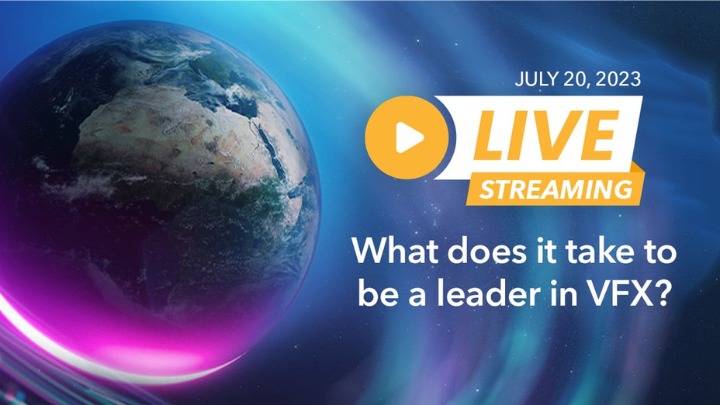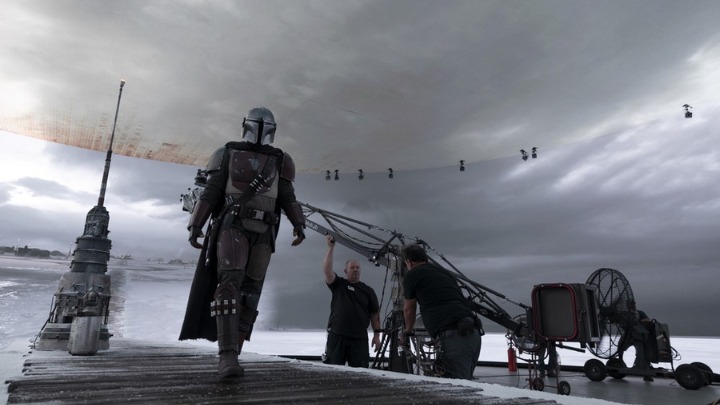
The Animation and VFX industry is constantly evolving, with new technologies being developed all the time. This rapid pace of change is driven by the demand for increasingly realistic and immersive visual effects in films, television, and other broadcasting media. The AVGC (Animation, Visual Effects, Gaming, Comics) sector is on a boom with rise of multiple OTT platforms and their gigantic demand of fresh contents.
Current state of the 3D Animation and VFX industry
As mentioned earlier, the AVGC industry is going strong. The United States is the largest market for animation and VFX, followed by Canada, China, India and Japan. As Animation and Visual Effects sector continues to develop, we can expect to see even more realistic and immersive visual effects in films, television shows, and other media. The industry is expected to grow at a CAGR of 13.7% from 2022 to 2030.
The film and television industry accounts for the largest share of the VFX market. The gaming industry is the fastest-growing segment of the VFX market. It is expected that the industry will provide 1 million new jobs by 2030. All thanks to its massive use in various broadcasting and gaming mediums.
Avatar and Avatar 2 films are a landmark in the use of 3D Animation and VFX, with over 90% of the film’s shots featuring some form of CGI and Visual Effects. The film’s groundbreaking use of motion capture technology helped to create some of the most realistic and immersive visual effects ever seen in a film.
Some of the key trends driving the growth of the 3D Animation and VFX industry include:
- The rise of streaming services, such as Netflix, Disney+, SonyLIV, Prime Video, HBO, Voot, ZEE5 which are investing heavily in original animated content.
- The increasing use of animation and VFX in marketing and advertising.
- The growing popularity of virtual reality (VR) and augmented reality (AR), which require advanced animation and VFX technology.
The AVGC industry is also facing some challenges, such as the high cost of production and the shortage of skilled talent. However, the industry is expected to continue to grow in the coming years, as the demand for immersive experiences continues to increase. If you are interested in a career in VFX, there are many opportunities available. Have a proper learning and upskill yourself to have a successful career in this exciting Media & Entertainment field.
Let’s check out some of the latest VFX technologies. As these technologies continue to develop, the possibilities for VFX will become even more limitless.
Real time rendering
Real-time rendering is a technology that allows VFX artists to see their work in real time. This is in contrast to traditional VFX workflows, which involve rendering images offline, which can take hours or even days. Real-time rendering speeds up the creative process and makes it easier to iterate on designs.
One of the most popular real-time rendering technologies is Unreal Engine. Unreal Engine is used by many VFX studios, including Industrial Light & Magic, Framestore, and Weta Digital. Unreal Engine has been used to create visual effects for films such as The Mandalorian, Avengers: Endgame, and Ready Player One.
Machine learning
Machine learning is a type of AI (Artificial Intelligence) that allows computers to learn from data without being explicitly programmed. Machine learning is being used in VFX to automate tasks such as crowd simulation, facial animation, and object tracking. This frees up VFX artists to focus on more creative tasks.
One of the most promising applications of machine learning in VFX is in the field of facial animation. Machine learning algorithms can be used to analyze human facial movements and expressions, and then use this data to generate realistic animations for digital characters. This technology has the potential to revolutionize the way facial animation is done in VFX.
Virtual production
Virtual production is a technique that allows filmmakers to create entirely virtual sets. This can be done by using game engines to render the sets in real time. Virtual production has the potential to revolutionize the way films and television shows are made. It can allow filmmakers to create complex and realistic sets that would be too expensive or dangerous to shoot in the real world.

The Mandalorian is a prime example of a film that used virtual production. The entire show was shot in a studio with LED screens that displayed the virtual sets. This allowed the filmmakers to create a realistic and immersive environment for the actors to perform in.
AR
AR is a technology that allows users to overlay digital information on top of the real world. AR is being used in VFX to create interactive experiences that allow users to interact with virtual objects in the real world.
One of the most popular AR platforms for VFX is the Microsoft HoloLens. The HoloLens allows users to see virtual objects in their field of view, and to interact with them using their hands. The HoloLens has been used to create VFX experiences for a variety of purposes, including training, education, and entertainment. This technology is being used to create interactive VFX experiences, such as those used in theme parks and museums.
AI
AI is a broad term that refers to the ability of machines to perform tasks that are typically associated with human intelligence. AI is being used in VFX to automate tasks, to generate creative content, and to improve the quality of visual effects.
One of the most promising applications of AI in VFX is in the field of object tracking. AI algorithms can be used to track the movement of objects in a scene, and then use this data to generate realistic visual effects. This technology has the potential to revolutionize the way visual effects are created in films and television shows.
What does it take to be a leader in VFX?
Want to learn more about all such new things of the VFX industry? Then this webinar is for you to learn about future of VFX. This is the latest edition in the series of Foundry Live Streaming. Details of the webinar are as follows.
Panelists:
- Zoe Cranley, Head of CG at beloFX
- Shannan Louis, Owner & Head of FatBelly VFX
- Nathalie Girar, Senior Head of 2D at Rodeo FX
Date: 20th July | 3 pm EDT | 12 pm PDT | 8 pm BST
Major topics of the VFX webinar:
- How they deal with the constantly evolving industry
- What leadership in VFX means to them
- Advice for entering into a leadership role
YouTube link of live streaming:
All the latest technologies are making it possible to create more realistic and immersive visual effects, and they are also making the VFX workflow more efficient and cost-effective. As these are continuously evolving, the future of VFX is limitless. This will lead to new and exciting possibilities for filmmakers, and it will allow audiences to experience films and television shows in a whole new way.
